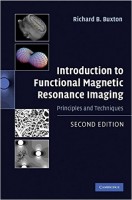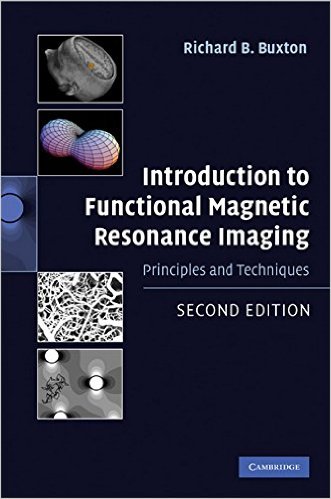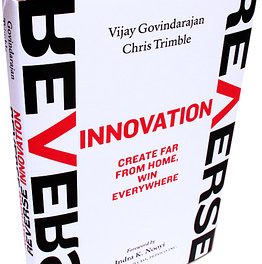 Author: Richard B. Buxton
Author: Richard B. Buxton
Publisher: Cambridge University Press – 457 pages
Book Review by: Nano Khilnani
Functional magnetic resonance imaging, known in short as fMRI, is a means of mapping the brain’s activation patterns, both in health and in disease, writes the author at the beginning of this book on a relatively difficult medical specialty but which holds a lot of promise, as we mention below in the fourth paragraph. Developments in procedures and techniques in this area of medicine have been expanded rapidly, especially since the mid-1990s, contributing to our deeper understanding of brain function.
Electroencephalography or EEG is also used to probe and record electrical activity in the brain, but this method does not give us a detailed picture. The other technique – computed tomography or CT – can be harmful because of the use of X-rays. Magnetic resonance imaging or MRI is not known to be physically harmful in any way. On the contrary functional MRI enables us to view some developments going on in the body, such as the development of organs.
While still dominated by basic neuroscience research, the study of fMRI has in recent years, evolved to study disease, and its clinical applications or uses are growing rapidly. This is an inter-disciplinary field that holds a lot of future promise for us because it is currently known to be at the crossroads of engineering, mathematics, neuroscience, physics, physiology, psychiatry, psychology, and radiology. Who knows what else we will find out about the potential of fMRI?
In this extensive book on the subject by Richard B. Buxton, a physicist by background and a leading authority on fMRI, you – the student, resident, or fellow in neuroimaging, or even the clinician, researcher or experienced neuroscientist – can study, understand a lot of neurological processes including the following, which consists of a list of topics covered in this book:
- An Overview of Functional Magnetic Resonance Imaging
- IA Introduction to the Physiological Basis of Functional Neuroimaging
- Neural Activity and Energy Metabolism
- Cerebral Blood Flow and Brain Activation
- IB Introduction to Functional Magnetic Resonance Imaging
- Nuclear Magnetic Resonance
- Magnetic Resonance Imaging
- Imaging Functional Activity
- Principles of Magnetic Resonance Imaging
- IIA The Nature of the Magnetic Resonance Signal
- Basic Physics of Magnetism and NMR
- Relaxation and Contrast in MRI
- Diffusion and the MR Signal
- IIB Magnetic Resonance Imaging
- Mapping the MT Signal
- Techniques in MRI
- Noise and Artifacts in MR Images
- Principles of Functional Magnetic Resonance Imaging
- IIIA Perfusion Imaging
- Contrast Agent Techniques
- Arterial Spin Labeling Techniques
- IIIB Blood Oxygenation Level Dependent Imaging
- The BOLD Effect
- Design and Analysis of BOLD Experiments
- Interpreting the BOLD Response
Among other important matters, you will learn in this second – 2009 edition – of the book:
- How MRI works
- What are the basic ideas and principles to its underlying physics and physiology
- What is the relationship between fMRI and other imaging techniques
- How to do a statistical analysis of fMRI data
Many new developments have occurred since the release of the first edition of this book in 2002. While still dominated by basic neuroscience research, the study of fMRI has in recent years evolved to study disease, and its clinical applications or uses are growing rapidly. What still remains is the use of examples as a means to understand basic principles.
What’s new in this edition? The early sections – on blood flow, energy metabolism, and neural activity – have been completely revised, and information gathered on new developments and discoveries has been added. And the last chapter in this edition elaborates on what the author thinks is primary challenge today for fMRI. To use his own words, it is this question: “how can we take fMRI from a mapping tool to a quantitative probe of brain physiology”?
The information in the chapters of this book is presented with a lot of visuals to facilitate your understanding of the various complex topics. As you begin to browse through first chapter itself for example, entitled Neural Activity and Energy Metabolism, you ask yourself: what is the relationship between neurons and energy? This is why the charts and drawings are utilized by the author – to make you visualize the many relationships.
You will study topics in this chapter that are likely not so familiar to you, such as: astrocytes playing a key role in recycling neurotransmitter, delivery of glucose and O2 by blood flow, electrophysiology measurements, glycolysis in the cytosol, lactate production and the lactate shuttle, metabolic activity, mitochondrial pyruvate metabolism and the electron transfer chain, neural activity, neural signaling as a thermodynamically downhill process, synaptic activity, the deoxyglucose technique for measuring glucose metabolism, the membrane potential, the sodium-potassium pump, and other such matters.
Author:
Richard B. Buxton is Professor of Radiology at the University of California at San Diego.







